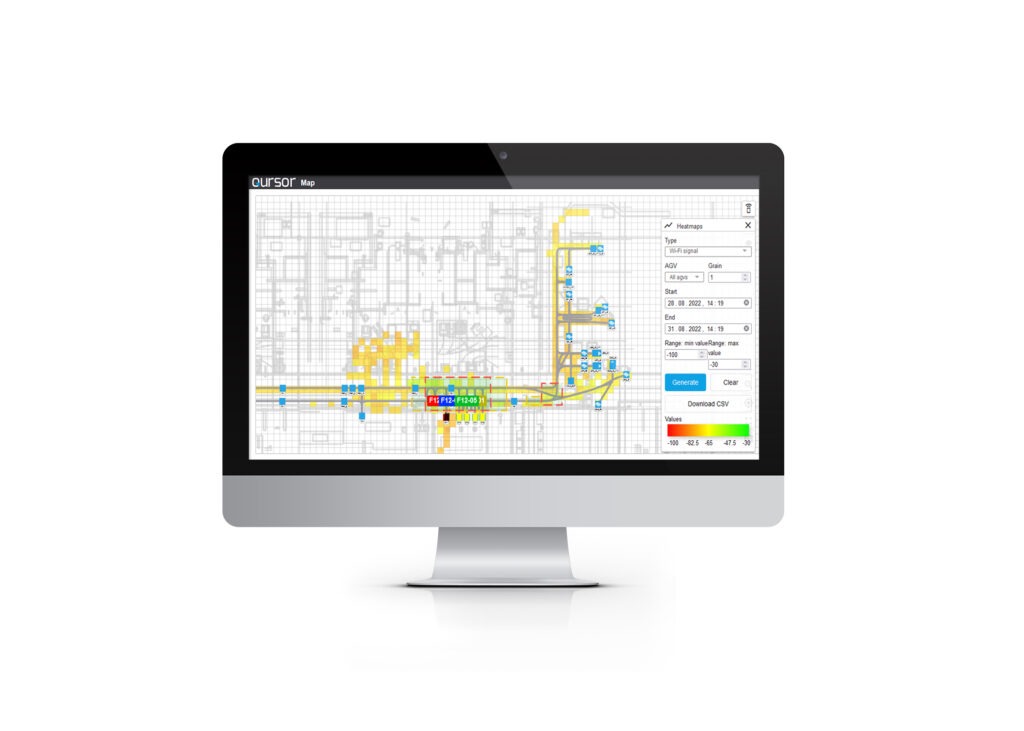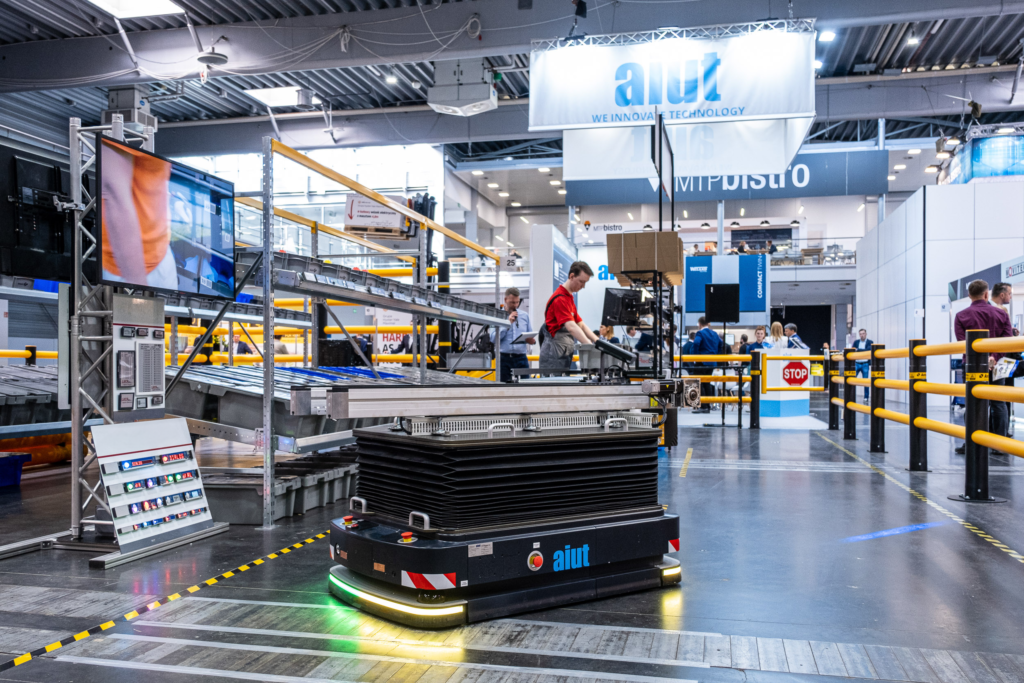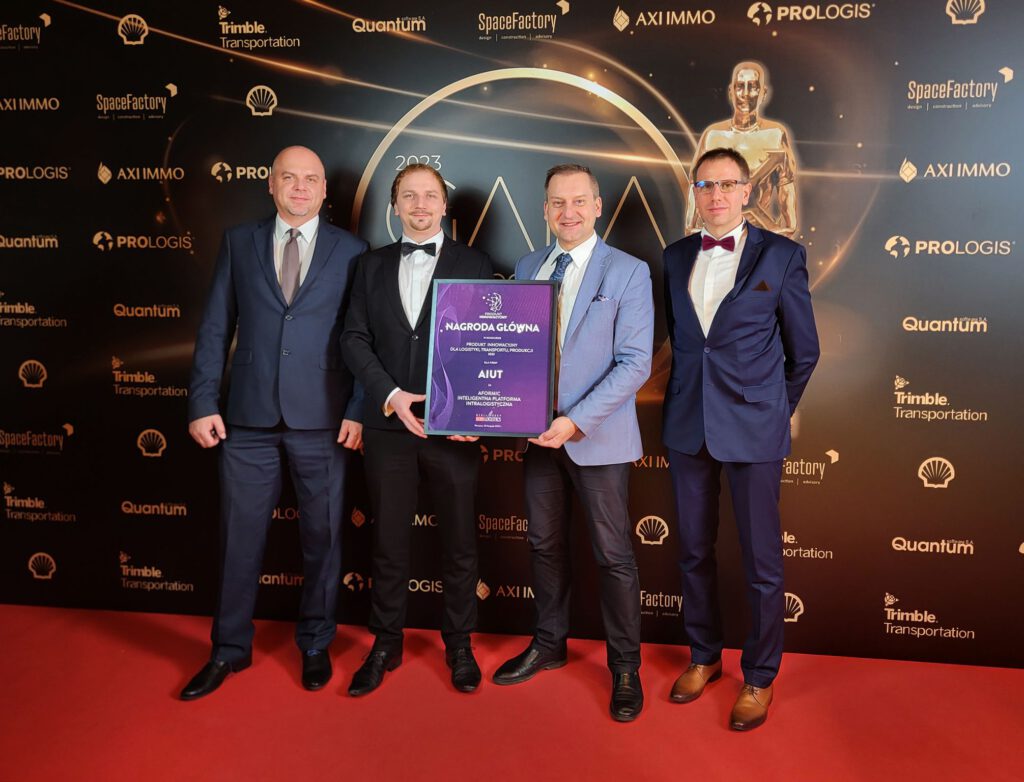When considering the integration of Autonomous Mobile Robots (AMRs) into your operations, there are several critical factors to evaluate. AMRs are revolutionizing industries by providing flexible, efficient, and intelligent solutions for material handling and logistics. However, selecting the right AMR solution involves more than just comparing technical specifications; it requires a comprehensive understanding of your operational needs, scalability, fleet management systems, compatibility with existing systems, safety standards, return on investment, and picking a trusted partner. In this blog article, we’ll explore what needs to be considered when choosing AMRs for your business.
1. Understanding your operational needs
The first step in selecting an AMR solution is to understand your operational needs thoroughly. This involves analyzing your current workflow, identifying bottlenecks, and determining the tasks you aim to automate. Whether transporting materials across a manufacturing floor, delivering goods in a warehouse, or providing service in a retail environment, the application will significantly influence the type of AMR you require. Consider factors such as payload capacity, navigation capabilities (e.g., indoor, outdoor, or mixed environments), and the adaptability of AMRs to your specific tasks.

2. Payload and Types of AMR robots
Payload capacity and the specific type of AMR are pivotal in meeting your operational needs. Warehouse automation robots are designed with various payload capacities to accommodate light to heavy-duty tasks. Understanding the weight and size of the items your AMRs will be transporting is crucial in selecting the appropriate model. Additionally, there are several types of AMRs to consider, including those specialized for transportation, picking, sorting, or even collaborative robots that work alongside humans. The choice depends on your application requirements, whether it’s navigating narrow warehouse aisles, delivering components to assembly lines, or assisting in picking and packing operations. Specifically, checking what possibilities of customization the AMRs F series of Aformic company offers can provide insights into how these solutions can be tailored to meet unique operational requirements, enhancing the efficiency and flexibility of your automation strategy.

3. Scalability and flexibility
As your business grows, your automation needs will evolve. Mobile robotics in logistics, including AMRs, are crucial for adapting to these changing demands. It’s essential to select AMRs that are scalable and flexible to adapt to changing demands. This means considering not only the current operational requirements but also future expansions. Look for AMRs that can be easily integrated with additional units to scale up operations and have the flexibility to perform a variety of tasks or be reprogrammed as your business requires change.
4. Fleet Management Systems that manages AMR robots
An advanced Fleet Management System (FMS) is critical for optimizing the performance and efficiency of your AMR fleet. Such systems, powered by sophisticated AMR technology, enable real-time monitoring and management of each AMR in your operation, ensuring they are performing optimally, navigating efficiently, and avoiding bottlenecks. An effective FMS can dynamically assign tasks based on priority and AMR availability, track each robot’s location, and monitor battery levels to schedule automatic recharging. Choosing AMRs that are compatible with or include a robust FMS is essential for maximizing throughput and achieving seamless automation. In this regard, explore the possibility of Qursor – Aformic’s system that manages a fleet of autonomous mobile robots F series — offering a tailored solution to efficiently coordinate your AMR operations, enhancing overall productivity and operational agility.

5. Compatibility with existing systems
Integration with existing systems is another critical factor. Autonomous warehouse robots should seamlessly integrate with your Warehouse Management System (WMS), Enterprise Resource Planning (ERP) system, or other management software. This integration is vital for coordinating tasks, optimizing workflows, and ensuring real-time data exchange. Compatibility with existing infrastructure, such as lifts, doors, and charging stations, should also be considered to avoid additional investments.

6. Safety standards and compliance of AMR solution
Safety is paramount when introducing AMRs into your workspace. Choose AMRs that adhere to international AMR safety standards and are equipped with advanced safety features like collision avoidance, emergency stop buttons, and safety-certified sensors. Compliance with regulatory requirements not only ensures the safety of personnel and assets but also minimizes the risk of operational disruptions. For an in-depth look at how Aformic’s AMR F series is equipped to meet these high safety standards, explore this link to see the advanced safety features and compliance details.

7. Return on investment (ROI)
Evaluating the ROI is essential when investing in AMRs. The efficiency of autonomous robots, especially in terms of reducing operational costs and improving workflow, plays a key role in this analysis. Consider the total cost of ownership, including the initial purchase, integration, maintenance, and any necessary training. Compare this with the expected benefits, such as increased efficiency, reduced labor costs, and improved accuracy. A thorough ROI analysis will help justify the investment and select an AMR solution that offers the best value for your business.
8. Choosing a trusted partner to implement AMR solution
Selecting a trusted partner for the integration of AMRs into your operations is just as important as the technology itself. A reliable integrator can provide valuable expertise in system design, implementation, and optimization to ensure your AMRs are fully aligned with your operational goals. Look for partners with a strong track record in robotics and automation, who understand your industry’s unique challenges, and can offer comprehensive support from initial consultation through to ongoing maintenance. A trusted integrator will not only help you choose the right AMRs, but also ensure they are integrated smoothly with your existing processes and systems, maximizing the return on your investment.

Aformic solution winning the grand prize in a prestigious competition “Innovative Product for Logistics, Transport, Production 2023” organized by Eurologistics Media Group. Get to know more here.
Conclusion
Picking the right AMR for your business requires careful consideration of your operational needs, scalability, fleet management system and its compatibility, safety standards, ROI, and partner support. By thoroughly evaluating these factors, you can select an AMR solution that not only meets your current needs but also supports your business’s growth and innovation. With the right approach, AMRs can significantly enhance operational efficiency, reduce costs, and drive your business forward in the competitive landscape of automation and robotics.